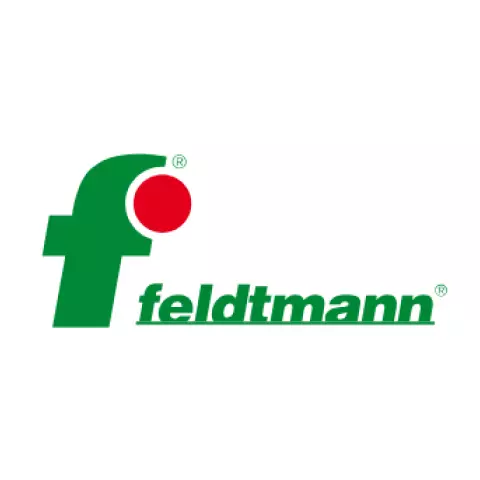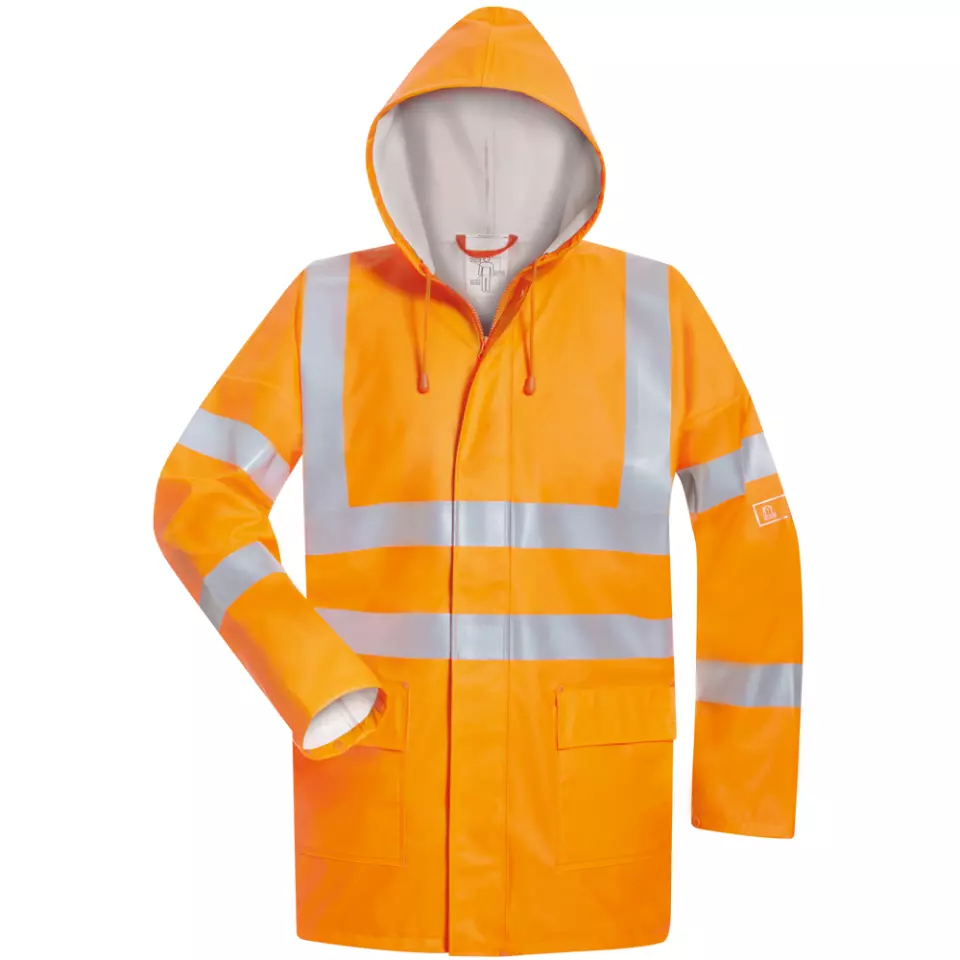NORWAY FRIDBERT Multinorm PU Rain Jacket
Feldtmann
visit storeProduct description
Norm: En ISO 20471, Class 3, En 343 Class 3/1, En 1149 5, En ISO 14116, Index 1, En ISO 13688Shell Fabric: Pu Coated Polyester, Ca. 190 G/M² Water Column: 8.000mm Colour: Fluo Orange Sizes: S 3Xl Breathable, Wind And Water Proof
Indicates the jacket's primary hue, affecting visibility, practicality, and compliance with workplace safety standards or team identification.
The mechanism that secures the garment, affecting ease of use, security, and functionality. Different styles offer varying levels of quick access and durability.
Indicates total storage compartments on the garment, enabling organization of tools, devices, and essentials for efficient, hands-free work.
Defines how sleeve ends are finished and secured at the wrist, affecting weather protection, comfort, and compatibility with work gloves.
Measured in grams per square meter (g/m²), indicating fabric density and durability. Higher numbers mean heavier, more protective materials for demanding environments.
Offers full arm coverage for protection and warmth in demanding work environments. Enhances safety and comfort with durable, long-lasting sleeves.
Offers head and neck weather protection. The attached hood provides warmth and shields against elements, enhancing comfort and functionality.
- Heat & Flame Resistance
- High Visibility
- Electrical Protection
- Water Resistance
- Machine Washable
Request a free sample
Test first and buy later. Visit any product page to request your free sample.
Standards and labels
Test results
Reflective Strip Area Grade 3The EN ISO 20471:2013 standard specifies the requirements for high-visibility clothing, with a specific focus on the reflective strip area, a crucial element for ensuring visibility in low-light conditions. A test result achieving Grade 3 indicates the highest level of reflectivity performance in this standard, ensuring optimal visibility and safety for the wearer in various lighting conditions. In grade 3 products reflective tape is 0.20 m2 and fluorescent material is 0.8 m2.The test methodology involves assessing the amount and quality of retroreflective material on garments. This is quantified under precise conditions to ensure that the reflective strips meet stringent visibility requirements even from significant distances or in poor lighting conditions. Garments that meet Grade 3 requirements are suitable for use in high-risk environments where being seen by others is crucial for safety, such as road construction sites, airport ground operations, and other scenarios with high vehicular traffic or complex visual backgrounds.
Test results
Flame Spread Test Index 1EN ISO 14116:2015 is a European standard established to assess the flame spread characteristics of protective clothing materials. Its purpose is to ensure that protective clothing offers adequate protection against the spread of flames, reducing the risk of burn injuries to the wearer. The designation Index 1 indicates the lowest level of flame spread performance, suggesting that the material provides limited protection against flame spread. This result implies that the clothing material may ignite relatively easily and propagate flames to a limited extent. The test method used to determine this result typically involves subjecting the material to a flame for a specified duration and observing the extent and speed of flame spread. Practical implications of this result for the product category include indicating that the protective clothing may not be suitable for use in high-risk environments with significant flame exposure, emphasizing the need for higher levels of flame-resistant clothing to ensure worker safety in such conditions.
EN 13688:2013/A1:2021 is an amendment to the European standard EN 13688:2013 that specifies the performance requirements for protective clothing. The standard includes requirements for safety, comfort, and durability, as well as tests for determining these properties. Protective clothing includes items like coveralls, aprons, and gloves that are worn to protect the wearer from hazards. The amendment updates the standard to include new test methods and performance requirements. Possible test results include resistance to chemicals, heat, abrasion and tearing, as well as breathability and comfort. The clothing can be tested under different conditions to check if it meets the standard's requirements.
EN 1149-5:2008 is a European standard that specifies the requirements for electrostatic dissipative (ESD) gloves. The standard defines performance requirements for material, design, and testing of ESD gloves. The gloves must be able to effectively discharge static electricity and protect the wearer from ESD. Testing includes measuring the surface resistance of the glove material. Pass/fail results are based on the gloves meeting or not meeting the specified requirements.
Test results
Material Performance TestedThe EN 1149-5:2008 standard specifies the performance requirements for material used in protective clothing designed to avoid incendiary discharges. The test result Tested means that the material has undergone relevant evaluation procedures to confirm its static dissipative properties. These tests generally involve measuring the electrical resistance of the material in ohms (Ω) to determine its capability to dissipate electrostatic charges and prevent sparking that could ignite flammable substances. The practical implications of this result for the respective product category (like protective workwear for use in explosive atmospheres) are significant, as it ensures that the clothing provides a level of protection against electrostatic discharges, potentially reducing the risk of fire or explosion in environments with flammable gases, vapors, or dusts.
EN 343 is a European standard for protective clothing against bad weather. It says clothes must be waterproof, breathable, and not let water in. It's used to protect workers in different industries like construction and transportation. Tests must show the clothing meets these standards.
Test results
Waterproofness Class 3EN 343:2019 is designed to ensure that protective clothing provides specific levels of protection against rain, considering its waterproof capabilities. Class 3 in this standard represents the highest level of waterproofness, indicating that the garment successfully resists a high volume of water penetration (more than 13000 Pascal Pressure units after pre-treatment). The test method used involves simulating wet weather conditions, where the fabric is exposed to varying degrees of water projections and pressures to evaluate its resistance. Fabrics that achieve Class 3 certification tend to have undergone rigorous testing such as high-pressure spray tests or being subject to a controlled volume of water for a defined period. These are particularly relevant for professional use in extremely wet environments where the highest level of water resistance is necessary, providing critical protection in conditions from heavy rain to immersion scenarios. This high classification impacts the practical usability of such clothing in industries such as outdoor work, marine activities, or emergency services where maximum protection from water exposure is critical for safety and performance.
Breathability Class 1In the standard EN 343:2019, Breathability Class 1 specifies the lowest (RET > 40) level of breathability for protective clothing against rain. This class is designated for garments that have a tested breathability value which meets the minimum requirement for water vapor resistance according to the specifications laid out in the standard. The practical implication of a Class 1 result is that the garment allows a limited amount of water vapor to pass through, making it suitable for less intensive or shorter duration activities in wet conditions.
CE Marking is a label that shows a product meets certain safety and environmental standards set by the European Union. To get the CE Marking, a company must test and certify their product meets these standards. CE Marking is required for many products sold in the EU, including electronics, machinery, toys and medical devices. It helps ensure that products are safe for consumers and the environment, and allows for easy trade within the EU.
Feldtmann delivery terms
Free delivery for all Feldtmann products
4 265,26 kr
Price per 10 pcs
426,53 kr / piece
Free delivery
A package contains 10 pieces
Need larger quantities?
Other products you may like
Recently viewed
Need help?
Get help from our experts
Other products you may like
Similar products you may like
Recommended for you
Feldtmann
Delivery time: 6 business days
Orders from 1 500,00 €
Supplier shipping fee 60,00 €
Free shipping on orders over 1 650,00 €



Find +150,000 products from hundreds of brands
Autonomous sourcing platform
The most efficient way to source and order supplies for your operations
Sourcing
Ordering
List products you’re looking for and we’ll find the best products and prices for you – all for free.
Need help?
Get help from our experts
